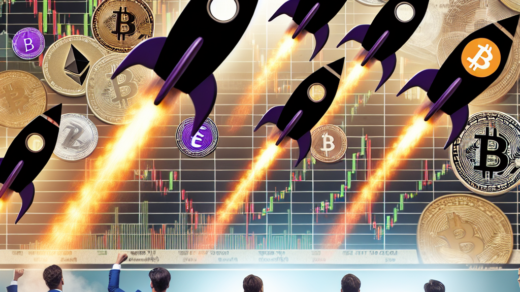Bitcoin Dips Below $59K as ETF Outflows Signal Declining Demand: What’s Next for BTC?
Bitcoin (BTC) has experienced a significant downturn, slipping under the crucial $59,000 mark. This decline can be attributed to ongoing profit-taking following last week’s bullish rally. As we delve into the latest developments, we’ll explore the implications of these changes for both retail and institutional investors.
Market Overview: Bitcoin’s Recent Performance
According to data from CoinGecko, Bitcoin lost just over 1% in the past 24 hours, culminating in a weekly loss of more than 3.5%. With just one day left in August, Bitcoin is on track to finish the month with an 8% decline. The current trend reflects a larger narrative—Bitcoin demand growth remains subdued and has even dipped into negative territory in recent weeks.
ETF Outflows Indicate Waning Institutional Interest
In a worrying sign for market sentiment, U.S.-listed Bitcoin exchange-traded funds (ETFs) recorded net outflows totaling $71 million on Thursday alone, marking the third consecutive day of withdrawals. Notably, Fidelity’s FBTC led the losses with outflows of $31 million, followed closely by Grayscale’s GBTC at $22 million. However, the most shocking development came from BlackRock’s IBIT, the largest Bitcoin fund globally, which also saw outflows of $13 million for only the second time in its history.
Retail Investors: A Contrasting Demand Pattern
While institutional interest may be waning, data from on-chain analytics firm CryptoQuant reveals an uptick in demand among U.S. retail investors. The Bitcoin price premium on the Coinbase exchange has surged to its highest level since July, indicating increased activity from retail traders. This is further supported by a notable flow of Bitcoin from exchanges outside the U.S. to Coinbase, historically correlated with rising prices.
Market Volatility on the Horizon
Despite the recent sideways trading of BTC, market analysts anticipate a spike in volatility in the coming weeks. The cryptocurrency has largely fluctuated within a tight range of +/- 1.5% compared to last week’s levels. Augustine Fan, head of insights at SOFA, noted in a weekly report that ETF inflows remain tepid. However, he expressed optimism that market dynamics would shift after the U.S. Labor Day, coinciding with next week’s non-farm payroll report.
Political and Economic Factors Influencing Crypto Markets
Political headlines are also expected to play a significant role in shaping market sentiment. Recently announced plans by the Harris/Walz administration to raise taxes aggressively could introduce further uncertainty. Traders at Singapore-based QCP Capital echoed this sentiment, suggesting that price action might remain erratic even as market volatility persists.
Understanding Market Sentiment and Future Expectations
As the market gears up for the upcoming non-farm payroll report, the sentiment remains cautious. Risk reversals until October are skewed towards puts in both BTC and ETH, indicating traders’ concerns about potential downside risks. Federal Reserve Chair Jerome Powell has confirmed a pivot to lower borrowing costs next month, a move that has historically uplifted bullish sentiment among traders. Lower borrowing costs typically stimulate growth in riskier sectors, including cryptocurrencies.
What Lies Ahead for Bitcoin Investors?
With no immediate catalysts expected in the near term, analysts predict that Bitcoin prices may continue to oscillate within a defined range as we transition into September. Investors should remain vigilant and informed about market developments, particularly as economic and political factors continue to evolve.
Conclusion: Navigating the Current Bitcoin Landscape
As Bitcoin hovers below the $59,000 threshold, the current market dynamics underscore the importance of understanding both institutional and retail behaviors. While ETF outflows signal declining institutional interest, retail investors are stepping up, creating a complex landscape for BTC. Staying informed about market trends and economic indicators will be crucial for navigating this ongoing volatility.
For those interested in the broader cryptocurrency ecosystem, understanding related assets and investment strategies is key. Whether you’re looking to buy Bitcoin or explore other digital currencies like XRP, consider diversifying your portfolio to mitigate risks associated with market fluctuations.
As we move into the fall, keeping an eye on upcoming economic reports and political developments will be essential for making informed investment decisions in the cryptocurrency market.











